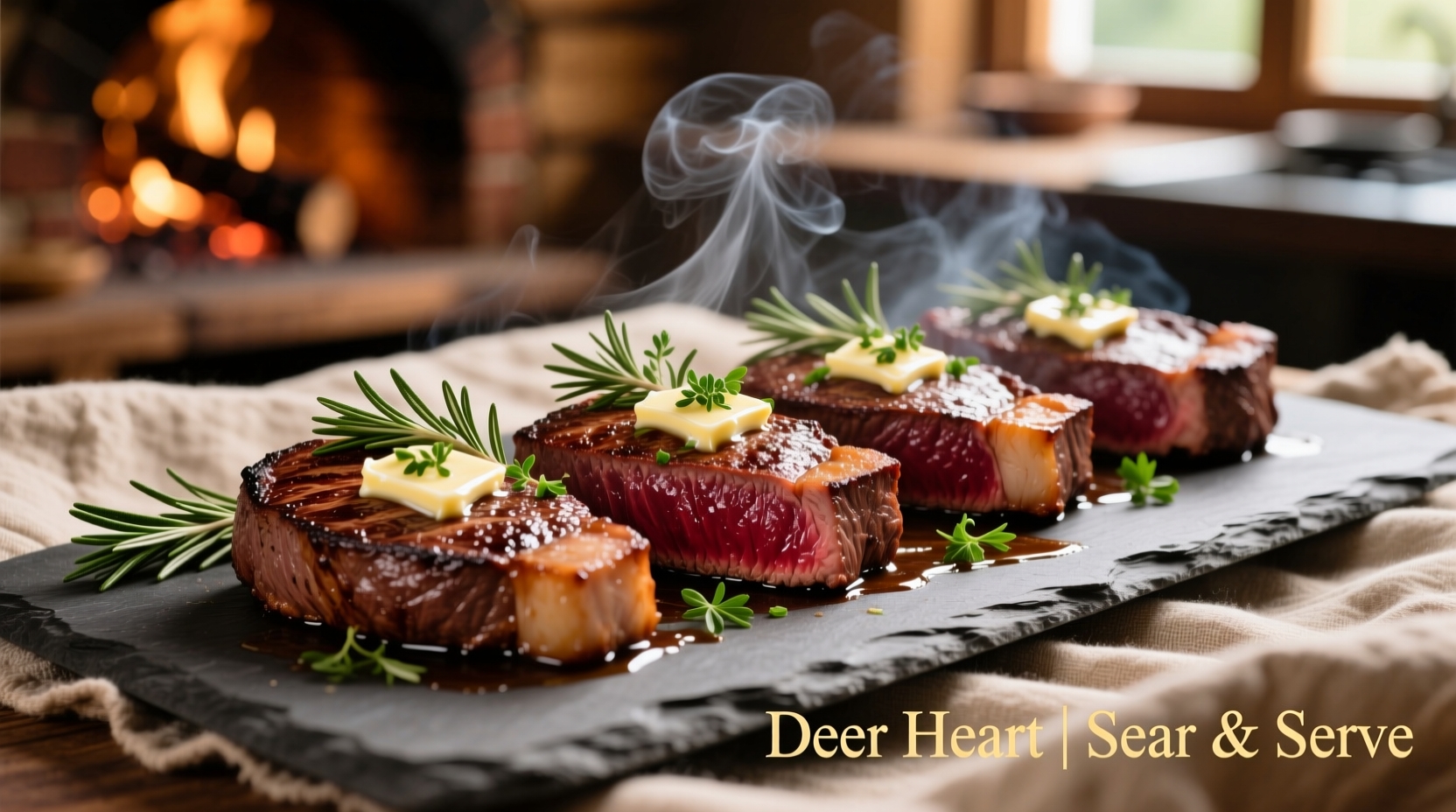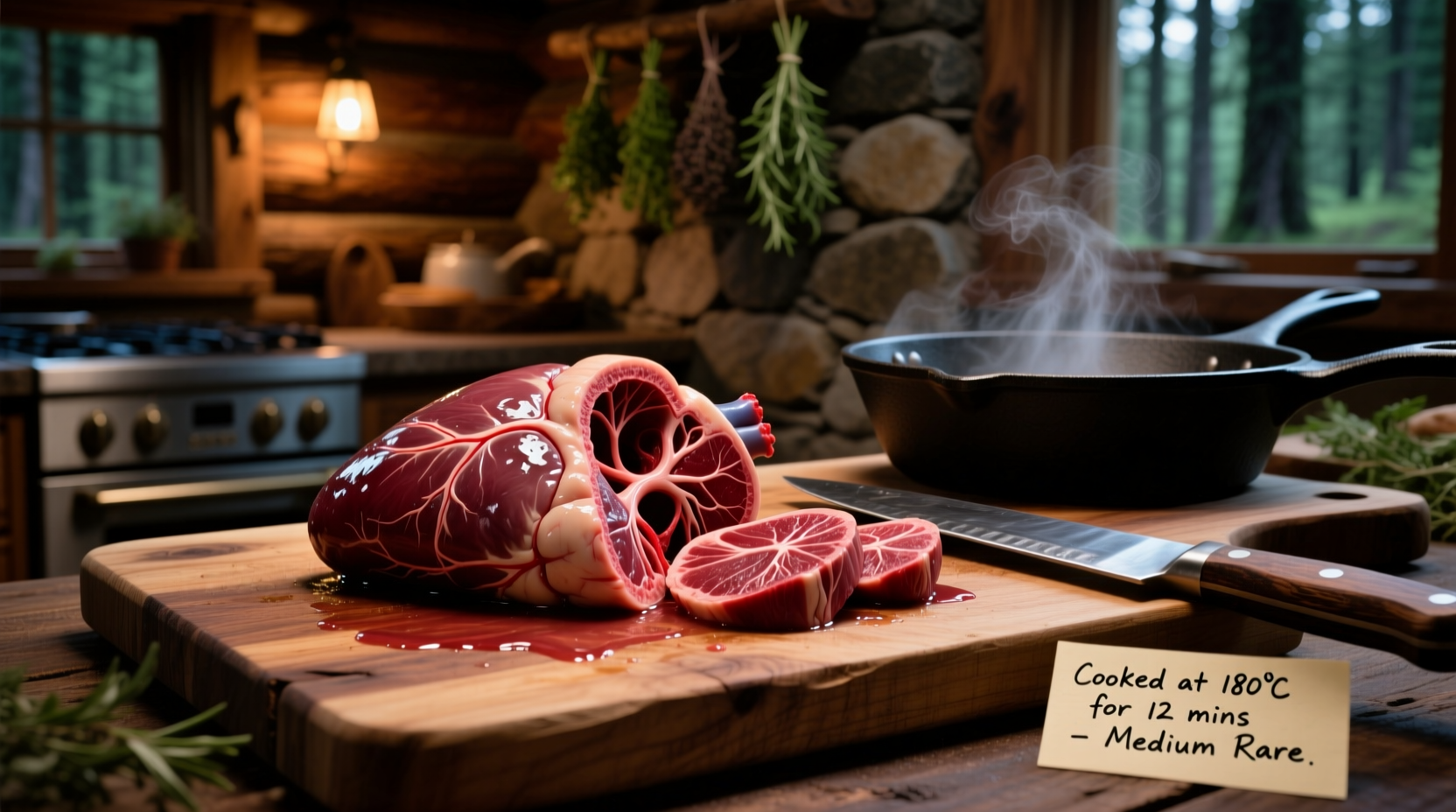Why Deer Heart Deserves a Place on Your Menu
Often overlooked despite its exceptional nutritional profile, deer heart packs more iron than beef liver and contains 22 grams of protein per 3-ounce serving. As a working muscle, it requires specific preparation to achieve optimal tenderness. With proper handling and cooking techniques, venison heart delivers a rich, clean flavor reminiscent of filet mignon with subtle game notes.
Essential Preparation Steps Before Cooking
Proper preparation makes the critical difference between tough and tender results. Follow these steps before heating your pan:
Sourcing and Initial Handling
Field-dressed hearts should be chilled within 2 hours of harvest. The USDA Food Safety and Inspection Service recommends maintaining game meat below 40°F during transport. If sourcing commercially, verify the meat comes from inspected facilities - check for the official USDA inspection legend on packaging.
Cleaning Process
Remove any remaining blood clots and silver skin through careful trimming:
- Rinse heart under cold water
- Cut open chambers to remove blood clots
- Peel away tough connective tissue membranes
- Soak in salted buttermilk for 2-4 hours (reduces gamey flavor)
- Rinse and pat completely dry before seasoning
| Cooking Method | Internal Temperature | Texture Result | Best For |
|---|---|---|---|
| Pan-searing | 125-130°F | Medium-rare, steak-like | Thin sliced preparations |
| Grilling | 120-125°F | Juicy with charred exterior | Whole heart steaks |
| Slow-cooking | 195-205°F | Fall-apart tender | Stews and braises |
Three Proven Cooking Methods for Perfect Results
Pan-Seared Venison Heart Steaks (Best for Quick Meals)
This restaurant technique delivers steakhouse-quality results in minutes. For optimal how to cook deer heart success:
- Slice heart crosswise into 1-inch thick steaks
- Season with coarse salt 30 minutes before cooking
- Heat cast iron skillet to smoking point
- Sear 2-3 minutes per side for medium-rare
- Finish with herb butter (rosemary, thyme, garlic)

Grilled Whole Heart (Traditional Approach)
Historically popular among hunting communities, this method preserves the heart's structure:
- Marinate in olive oil, garlic, and juniper berries for 4 hours
- Preheat grill to 400°F with two-zone fire
- Sear directly over flames for 2 minutes per side
- Move to indirect heat until reaching 125°F internally
- Rest 10 minutes before slicing against the grain
Slow-Cooked Heart Stew (For Maximum Tenderness)
When working with older deer, this method transforms tougher hearts:
- Cut heart into 1-inch cubes
- Brown in batches with bacon fat
- Add 1 cup red wine and reduce by half
- Cover with beef stock and add root vegetables
- Cook at 300°F for 2.5-3 hours until fork-tender
Flavor Pairings That Elevate Deer Heart
Professional chefs recommend these combinations to complement venison heart's rich flavor profile:
Acid Components (Essential for Balance)
- Black cherry reduction
- Balsamic fig glaze
- Cranberry-port sauce
- Lemon-thyme gremolata
Vegetable Pairings
- Roasted wild mushrooms
- Caramelized shallots
- Garlic mashed potatoes
- Charred asparagus
Food Safety Considerations Specific to Game Hearts
Unlike domesticated meats, game hearts require special handling considerations. The Centers for Disease Control and Prevention (CDC) recommends cooking all game meats to proper internal temperatures to eliminate potential pathogens. While beef can be safely consumed at lower temperatures, deer heart should reach at least 125°F for medium-rare to ensure safety while maintaining tenderness.
Never consume raw or undercooked game heart. Proper chilling immediately after harvest prevents trichinella parasite development - maintain temperatures below 40°F during transport and storage.
Serving Suggestions for Impressive Presentation
Transform your how to cook deer heart results into a memorable meal with these chef-recommended presentations:
- Slice thinly against the grain for carpaccio-style appetizers
- Pair with juniper berry-infused jus for traditional game presentation
- Top with crispy fried capers for textural contrast
- Serve alongside roasted root vegetables for seasonal appeal
Common Mistakes to Avoid
Based on culinary research from the American Culinary Federation, these errors ruin otherwise good deer heart:
- Overcooking beyond 135°F (becomes tough and dry)
- Skipping the buttermilk soak (increases gamey flavor)
- Cutting with the grain (creates chewy texture)
- Using strong spices that overwhelm delicate flavor











 浙公网安备
33010002000092号
浙公网安备
33010002000092号 浙B2-20120091-4
浙B2-20120091-4